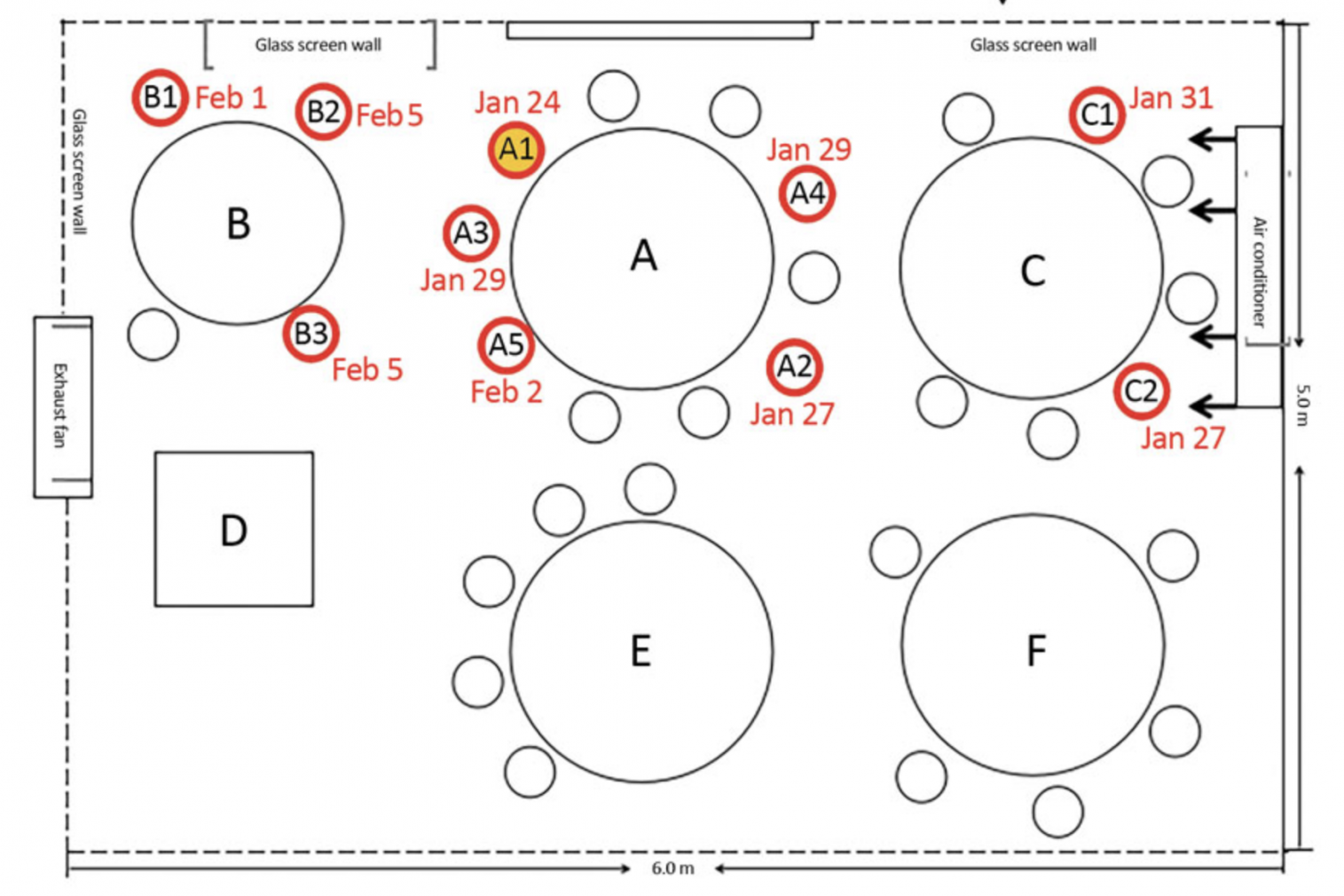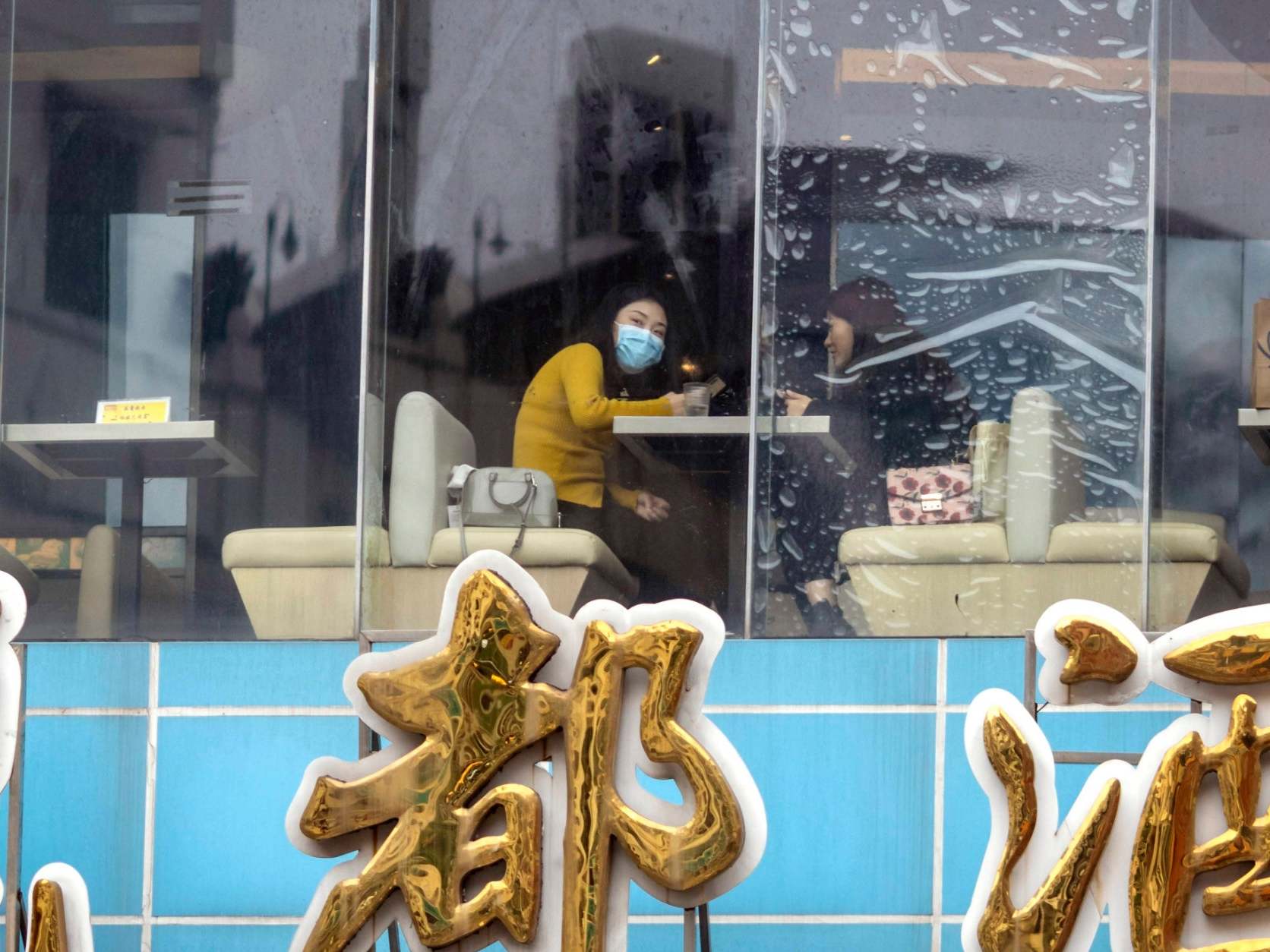Can air conditioning spread the coronavirus?
Researchers in China found that one diner with the coronavirus infected nine others at an air-conditioned restaurant in Guangzhou in January
Your support helps us to tell the story
From reproductive rights to climate change to Big Tech, The Independent is on the ground when the story is developing. Whether it's investigating the financials of Elon Musk's pro-Trump PAC or producing our latest documentary, 'The A Word', which shines a light on the American women fighting for reproductive rights, we know how important it is to parse out the facts from the messaging.
At such a critical moment in US history, we need reporters on the ground. Your donation allows us to keep sending journalists to speak to both sides of the story.
The Independent is trusted by Americans across the entire political spectrum. And unlike many other quality news outlets, we choose not to lock Americans out of our reporting and analysis with paywalls. We believe quality journalism should be available to everyone, paid for by those who can afford it.
Your support makes all the difference.A study linking coronavirus transmission to an air-conditioning unit has highlighted a potential challenge for restaurants and other businesses as the US takes steps to reopen from pandemic lockdown.
Researchers in China conducted a limited study after an incident in January where one diner infected nine others at a restaurant in the city of Guangzhou.
“We conclude that in this outbreak, droplet transmission was prompted by air-conditioned ventilation. The key factor for infection was the direction of the airflow,” researchers from the Guangzhou Center for Disease Control and Prevention said. Their report will be published in the Centers for Disease Control and Prevention’s Emerging Infectious Diseases journal in July.
Somewhat good news is that although nine people were infected, none of the other 81 customers and staff present in the restaurant that day contracted the coronavirus.
As summer approaches, air-conditioning becomes a ubiquitous presence in the US and blasts continuously in workplaces, restaurants, bars, stores and gyms. Some 90% of American homes have air-conditioning.
However to date, there is no scientific consensus that airborne transmission of Covid-19 occurs.
Dr Werner E. Bischoff, the medical director of infection prevention and health system epidemiology at the Wake Forest School of Medicine in North Carolina, told The Independent that he was impressed by the Guangzhou researchers' tracking of cases but cautioned that as a field study, it came with limitations.
"There are a number of unknown factors, for example, did they stand in line to get food or walk behind someone going up the stairway?" he said. "The air conditioning is not completely ruled out but it is something that we have to follow-up on."
He added: "It's a great study but I wouldn't come to any quick conclusions about not going to restaurants or sitting next to the air-conditioning system."
Dr Bischoff also emphasised the importance of following the CDC's 6ft social distancing guidelines while epidemiologist Meghan May, from the University of New England College of Osteopathic Medicine, said air-conditioning was lower on the list than more pressing issues.
She told BI: "I'm not yet convinced it is a concern but if it is, I would say air-conditioning is the least of your worries in mass transit or apartments."
Harvey V. Fineberg, who leads the Standing Committee on Emerging Infectious Diseases and 21st Century Health Threats at the National Academies of Sciences, Engineering and Medicine, told the New York Times that restaurants should consider the direction of airflow when arranging tables and the report's "provocative and eye-opening" findings could have implications for a broad range of locations.

The study was conducted by the Guangzhou Center for Disease Control and Prevention and the Guangzhou Yuexiu District Center for Disease Control and Prevention. It found that between 26 January and 10 February, an outbreak of the coronavirus affected 10 people from three families who had all eaten in close proximity at the restaurant.
On 23 January, family “A” travelled from Wuhan, China, where the coronavirus is believed to have originated, to Guangzhou, around 600 miles away. China began banning people from leaving or entering Wuhan on 23 January and in the following days shut down rail service and flights to the province along with setting up road checkpoints.
On 24 January, family "A", including a 63-year-old woman who had the coronavirus but not yet fallen ill - patient "A1" - had lunch at a Guangzhou restaurant.
Two other families, labelled “B” and “C” in the study, sat at tables next to family “A”.

The dining room where the families ate was around 145sqm in size and each of the building's five floors had its own AC unit. The third-floor restaurant's AC unit was located above table C and the tables were around 1m apart.
The families spent roughly an hour in the restaurant together. In the hours after lunch, patient “A1” went to hospital with a fever and cough.
Within two weeks, nine more people – four in total from family “A”; three from family “B” and two from family “C” – had developed the coronavirus.
The disease researchers' investigation found that the other families only known exposure to the coronavirus was with patient “A1”.
One member of families “B” and “C” caught the infection at the restaurant and the other cases were the result of in-family transmission, the study found.
The scientists also took samples from the air conditioner and found that it was negative for the coronavirus.
The researchers noted that their work “has limitations” and that an experimental study simulating the airborne transmission route was not conducted.
Recommendations in the report included increasing the distance between tables, temperature-monitoring surveillance and improving ventilation to prevent the spread of viruses in restaurants.
The CDC recommends wearing cloth face coverings to slow the spread of Covid-19 but this is bound to be a complicated practice to adhere to when eating and drinking. Respiratory droplets can be spread from an infected person’s coughing, sneezing, speaking or breathing.
The agency recommends ensuring good air flow from an air conditioner or an opened window in shared common spaces to mitigate risks of Covid-19 spread.

Join our commenting forum
Join thought-provoking conversations, follow other Independent readers and see their replies
Comments